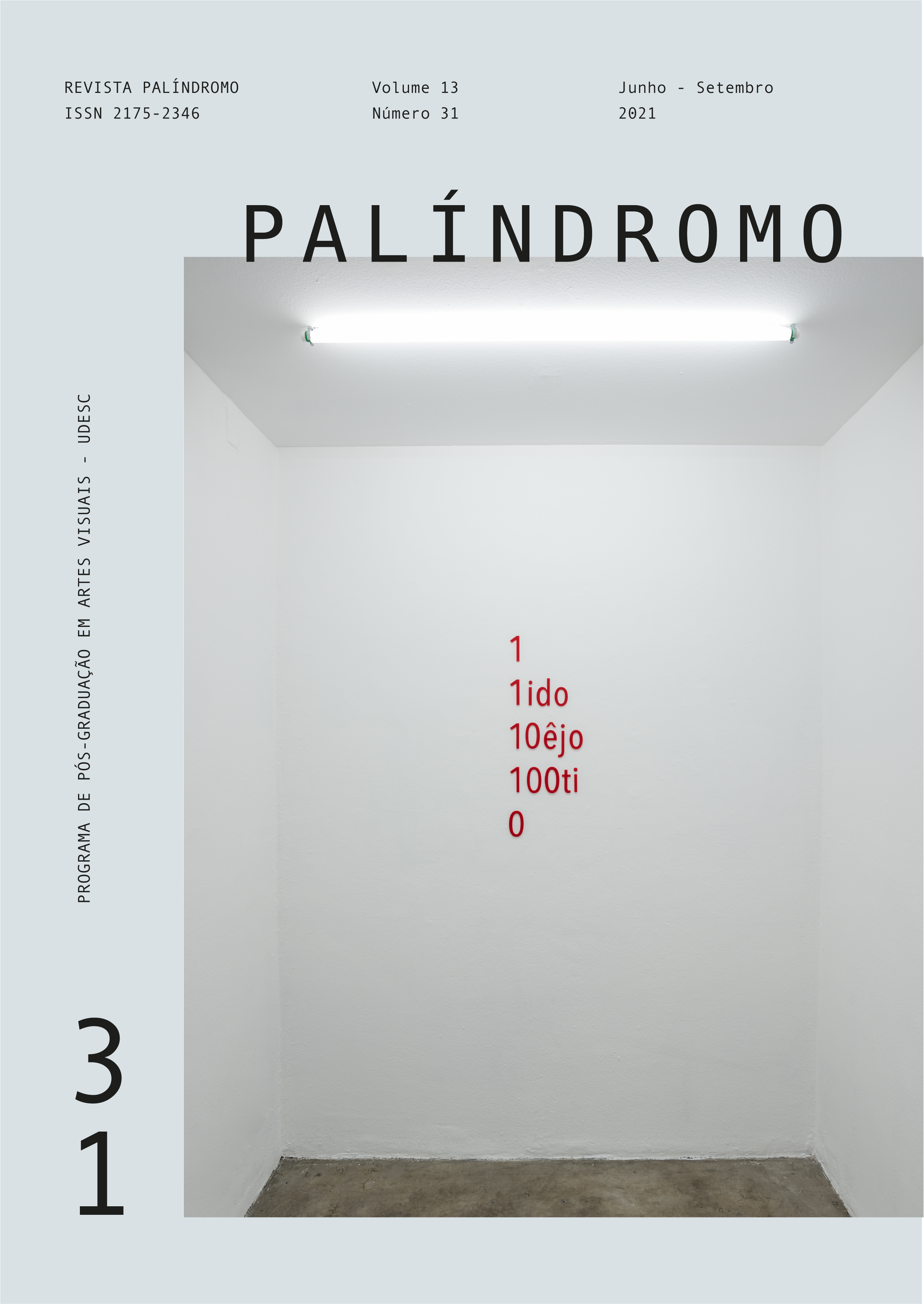Da partitura à ação
DOI:
https://doi.org/10.5965/2175234613312021135Parole chiave:
Fluxus, Partitura, John CageAbstract
Quando a partitura deixa de ser uma inscrição com objetivos substancialmente representacionais, ela assume uma direção mais operacional, indicativa de ações. Não à toa, a forma partitura passa a ser amplamente utilizadas por artistas das vanguardas dos anos 60 que buscavam reconfigurar a noção de objeto de arte, antes muito fechado e derivativo, partindo para proposições mais performativas e distribuídas. O marco do ganho de autonomia formal da partitura é localizado na obra do compositor John Cage – sua posição de converter música em som e vice e versa acaba inaugurando um regime onde tudo soa. O movimento Fluxus está inscrito em uma dinâmica estética de ritualizar os hábitos do cotidiano, prolongando as ocorrências comuns para a temporalidades dos acontecimentos. Neste escrito tento pensar as aproximações teóricas entre ambos balizados pela questão da linguagem, uma vez que tanto as partituras-acontecimento como os procedimentos “cageanos” se utilizam de uma temporalidade performativa em relação à escrita e à leitura, assim como em relação à escuta.
Downloads
Riferimenti bibliografici
GACHE, Bélen. Consideraciones sobre la lectura. Madrid, 2015.
GACHE, Bélen. Instruções de uso: partituras, receitas e algoritmos na poesia e na arte contemporâneas (a forma “partitura” e as novas formas literárias). Florianópolis, Par(ent)esis, 2017.
HIGGINS, Hannah. Fluxus experience. Berkeley and Los Angeles, California, University of California Press.
KOSTELANETZ, Richard. Conversing with Cage. New York, Limelight Editions, 1988.
KOTZ, Liz. Cagean Structures. In: The Anarchy of Silence. John Cage and Experimental Art. Barcelona, MACBA, 2009. p. 118-135.
KOTZ, Liz. Words to be looked at: language in the 1960s art. Cambridge, MIT Press, 2007.
LABELLE, Brandon. Reading Between the Lines: Word as Conceptual Project. In: Performance Research: On Fluxus, vol. 7, n. 3, Routledge, setembro, 2007, p. 47-53.
LIMA, Henrique Rocha de Souza. Desenhos de Escuta: políticas de auralidade na era do áudio ubíquo. Tese apresentada ao Programa de Pós-Graduação em Música da Escola de Comunicação e Artes da Universidade de São Paulo, 2018.
MORAIS, Fabio. Palavras para serem vistas: a linguagem na arte dos anos 1960. Florianópolis, ¿Hay en português? nº6, Par(ent)esis, 2016.
Downloads
Pubblicato
Come citare
Fascicolo
Sezione
Licenza
Copyright (c) 2021 Daniela Avellar

TQuesto lavoro è fornito con la licenza Creative Commons Attribuzione 4.0 Internazionale.
DECLARAÇÃO DE DIREITOS AUTORAIS
a. Os artigos publicados pela revista são de uso gratuito, destinados a aplicações acadêmicas e não comerciais. Todos os direitos autorais são atribuídos à revista. Os artigos cujos autores são identificados representam a expressão do ponto de vista de seus autores e não a posição oficial da Revista Palíndromo. O (s) autor (es) compromete-se sempre que publicar material referente ao artigo publicado no Palíndromo mencionar esta publicação da seguinte forma:
Este artigo foi publicado originalmente pela revista Palíndromo em seu volume (coloque o volume), número (coloque o número) no ano de (coloque o ano) e pode ser acessado em: http://www.revistas.udesc.br/index.php/palindromo
b. Plágio, em todas as suas formas, constitui um comportamento antiético de publicação e é inaceitável. A revista Palíndromo utiliza o software iThenticate de controle de similaridade


